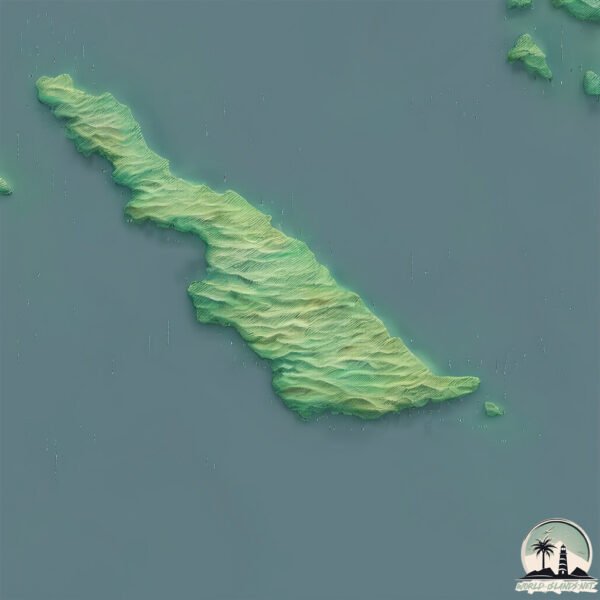Bruce

Welcome to Bruce, a Polar island in the Davis Strait, part of the majestic Arctic Ocean. This guide offers a comprehensive overview of what makes Bruce unique – from its geography and climate to its population, infrastructure, and beyond. Dive into the details:
- Geography and Size: Explore the island’s size and location.
- Climate and Weather: Weather patterns and temperature.
- Topography and Nature: Uncover the natural wonders of the island.
- Infrastructure and Travelling: Insights on reaching, staying, and making the most of your visit.
- News and Headlines: Latest News.
Geography and size of Bruce
Size: 12.3 km²
Coastline: 37.5 km
Ocean: Arctic Ocean
Sea: Davis Strait
Continent: North America
Bruce is a Medium Island spanning 12 km² with a coastline of 37 km.
Archipel: Canadian Arctic Archipelago – A vast and remote region in northern Canada, consisting of a series of large and small islands known for their extreme Arctic environment and unique wildlife.
Tectonic Plate: North America – Covers North America and parts of the Atlantic and Arctic Oceans, characterized by diverse geological features and varying levels of seismic activity.
The geographic heart of the island is pinpointed at these coordinates:
Latitude: 63.31316541 / Longitude: -67.43221904
Climate and weather of Bruce
Climate Zone: Polar
Climate Details: Tundra
Temperature: Cold
Climate Characteristics: The tundra climate features long, extremely cold winters and short, cool summers. Vegetation is limited to mosses, lichens, and small shrubs due to the low temperatures and short growing seasons. Biodiversity is low, but some specialized species thrive.
Topography and nature of Bruce
Timezone: UTC-05:00
Timezone places: America/New_York
Max. Elevation: 78 m
Mean Elevation: 26 m
Vegetation: Herbaceous Cover
Tree Coverage: 62%
The mean elevation is 26 m. The highest elevation on the island reaches approximately 78 meters above sea level. The island is characterized by Plains: Flat, low-lying lands characterized by a maximum elevation of up to 200 meters. On islands, plains are typically coastal lowlands or central flat areas.
Dominating Vegetation: Herbaceous Cover
Comprising mainly of grasses, herbs, and ferns, these areas are common in prairies, meadows, and savannas, and can vary widely in species composition. Bruce has a tree cover of 62 %.
Vegetation: 2 vegetation zones – Low Diversity Island
Islands with two distinct vegetation zones offer slightly more ecological variety. These zones could be due to differences in elevation, moisture, or other environmental factors. While still limited in biodiversity, these islands may offer a contrast between the two zones, such as a coastline with mangroves and an inland area with grassland.
Infrastructure and Travelling to Bruce
Does the island have a public airport? no.
There is no public and scheduled airport on Bruce. The nearest airport is Iqaluit Airport, located 128 km away.
Does the island have a major port? no.
There are no major ports on Bruce. The closest major port is PANGNIRTUNG, approximately 363 km away.
The mean population of Bruce is 0 per km². Bruce is Uninhabited. The island belongs to Canada.
Continuing your journey, Augustus Island is the next notable island, situated merely km away.
Best Places in Bruce Peninsula National Park 2023 | A MUST WATCH | Tobermory | Grotto



Canada is classified as Developed region: G7: Group of Seven – Major advanced economies, including Canada, France, Germany, Italy, Japan, the United Kingdom, and the United States. The level of income is High income: OECD.
News – Latest Updates and Headlines from Bruce
Stay informed with the most recent news and important headlines from Bruce. Here’s a roundup of the latest developments.
- Strictly anniversary show pays tribute to Caroline Flack and Sir Bruce Forsyth - Shropshire Staron 21 December 2024
Strictly anniversary show pays tribute to Caroline Flack and Sir Bruce Forsyth Shropshire Star
- Woman arrested over death of Steve Bruce's four-month-old grandson - Island FMon 16 December 2024
Woman arrested over death of Steve Bruce's four-month-old grandson Island FM
- Actor channels Lenny Bruce during SJCC performance - Mercer Island Reporteron 14 December 2024
Actor channels Lenny Bruce during SJCC performance Mercer Island Reporter
- Island District RCMP has new commander - Times Coloniston 11 December 2024
Island District RCMP has new commander Times Colonist
- Veteran officer takes the helm of Vancouver Island RCMP - Nanaimo Bulletinon 9 December 2024
Veteran officer takes the helm of Vancouver Island RCMP Nanaimo Bulletin
- Greater Victoria Chamber CEO Bruce Williams moving on by June 2025 - Island Social Trendson 3 December 2024
Greater Victoria Chamber CEO Bruce Williams moving on by June 2025 Island Social Trends
- Bruce W Patterson Obituary - Visitation & Funeral Information - All Faiths Funeral Homeon 30 November 2024
Bruce W Patterson Obituary - Visitation & Funeral Information All Faiths Funeral Home
- Extra police to patrol roads after another Bruce Highway fatality near Gin Gin - ABC Newson 28 November 2024
Extra police to patrol roads after another Bruce Highway fatality near Gin Gin ABC News
- 10 things learned at Bruce Springsteen's concert in Vancouver - North Island Gazetteon 27 November 2024
10 things learned at Bruce Springsteen's concert in Vancouver North Island Gazette
- Bruce Highway (Brisbane - Gympie), Buchanan Road to Caboolture-Bribie Island Road upgrade, business case - Transport and Main Roadson 14 November 2024
Bruce Highway (Brisbane - Gympie), Buchanan Road to Caboolture-Bribie Island Road upgrade, business case Transport and Main Roads
Please note: The data used here has been primarily extracted from satellite readings. Deviations from exact values may occur, particularly regarding the height of elevations and population density. Land area and coastline measurements refer to average values at mean high tide.
